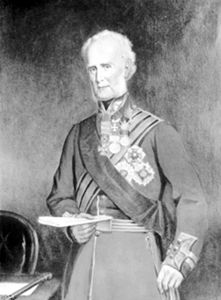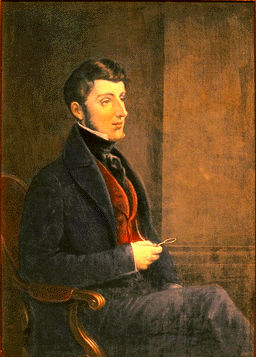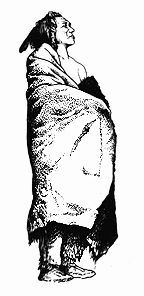Between 1838 and 1841, Lower Canada was governed by an “authoritarian” political body known as the Special Council. Though it was initially created to give the British government time to figure out why the peaceful population of Lower Canada had rebelled — therefore giving it proper information to make a wise decision about the colony’s future — the Special Council passed important ordinances that expanded the role of the state in the colony and improved its general infrastructure. The council’s tenure came to an end on 10 February 1841 when it made way for the union of Canadas.
Origins, Creation, Authority
In the weeks that followed the 1837 Lower Canada Rebellion, the British government attempted to make sense of what was happening in its North American colony. The British Cabinet simply did not know why the peaceful population of Lower Canada had revolted or why the colonial administration had been paralyzed, and therefore did not have the necessary information to make wise decisions about the colony’s future. On 10 February 1838, in order to figure out what to do with its rebellious colony, it suspended the 1791 Constitution, dissolved the Legislative Assembly, and put in place the Special Council to govern the colony.
The council was granted the authority of the Legislative Assembly and Legislative Council and was expected to pass ordinances that would re-establish peace and tranquility in the colony and guarantee the rights and liberties of all inhabitants. Since the formal political process had been suspended, meaning there would be no elections or local elected assembly, the council did not have to worry about the opinions of the local population.It could consequently adopt any measures it saw fit, so long as they did not modify the colony’s laws and constitution or impose new taxes and duties on the colony’s population. As such, many contemporaries (and later historians) saw the Special Council as “authoritarian,” “tyrannical,” and “repressive.” They also claimed it abused its authority when it suppressed several civil liberties and even censored opposition newspapers. In total, three governors general sat at the head of the council: Sir John Colborne, Lord Durham and Charles Poulett Thomson.
Colborne’s First Council

The first governor to head the Special Council was John Colborne, whose first council lasted from 18 April to 5 May 1838. His tenure was always meant to be short-lived, however, as Lord Durham had already been appointed the new governor general of the colony. Colborne was to act as council caretaker until Durham arrived in Lower Canada. His first order of business was to select his councillors. A total of 22 individuals were selected; most had significant political experience and were some of the colony’s leading businessmen. Several, including Peter McGill, John Molson and Turton Penn, had another thing in common: they were part of a group known as the Constitutionalists, a tendency that continued throughout most of the history of the Special Council. Constitutionalism was an important rallying point for British Canadians in the late 1830s. The relatively radical Constitutionalists of the Special Council were very hostile to the Patriotes and sought the assimilation of French Canadians through the union of the Canadas.
As Colborne’s council was the first to follow the rebellion, its main objective was to deal with its aftermath and prevent any future revolt. Of the 26 ordinances it passed, the majority were therefore directly related to it. For example, the council passed an ordinance suspending habeas corpusfor all prisoners suspected of treason; one protecting all civilians that fought the rebels from accusations of vigilantism; and one censoring the colony’s newspapers from printing articles that promoted rebellious actions. With Lord Durham’s arrival expected shortly, Colborne prorogued his council on 5 May 1838.
Durham’s Council

Although mostly remembered for his mission and infamous report, Lord Durham was the head of the Special Council from 28 June to 31 October 1838. His first act was to dissolve Colborne’s council and select his own councillors. Unlike Colborne, he did not choose his from the local elite, but replaced them with British officials. He reassured the local population that this decision was done with the best of intentions: he did not want his council to be associated with any party or “race.” When compared to Colborne and Thomson’s councils, Durham’s did not pass as many groundbreaking ordinances. However, it did pass one of the most controversial.
Dubbed the “Bermuda Ordinance,” this measure aimed to resolve the problem caused by the large number of prisoners in Lower Canada following the rebellion. How should they be dealt with? Should they be punished severely or treated leniently? Durham’s answer was to exile all prisoners that played a leadership role in the rebellion to Bermuda and allow all others to return home; additionally, certain Patriotes who fled to the United States faced execution if they returned to Lower Canada. Although the ordinance was well received in Lower Canada, his enemies in Britain, Lord Brougham and Lord Ellenborough, attacked its legality and constitutionality; he had sent prisoners to a colony he had no jurisdiction over and enacted new criminal law. The ordinance was annulled in August 1838. Following these attacks, Durham prematurely resigned from his post in October 1838, arguing that his position and authority had been so weakened that he no longer believed that staying in Lower Canada would yield any benefits.
Colborne’s Second Council
Following Durham’s departure, Colborne was once again called to helm the Special Council. His second tenure lasted from 5 November 1838 to 13 April 1839, and like his first, he had to contend with a rebellion (the 1838 Lower Canada Rebellion) and act as caretaker until the new governor, Charles Poulett Thomson, arrived. After reappointing all of his former councillors and dealing with the aftermath of the rebellion, his council passed ordinances that improved the colony’s infrastructure. For example, it invested in the colony’s economy and commerce by funding the deepening of Lake St. Peter and the completion and construction of several roads, bridges, and canals, including the Chambly Canal. It also invested in the colony’s educational system by funding various colleges, such as the College of Chambly and the College of Sainte-Anne-de-la-Pocatière.
More importantly, and according to several historians, it laid the foundations for the dismantlement of the seigneurial system. In April 1839, the council passed an ordinance that incorporated the Seminary of Saint-Sulpice (see Sulpicians) into an ecclesiastical corporation, confirming its rights to its lands in the district of Montréal. However, this confirmation came with an important condition: if at any time, any person living on land owned by the seminary wished to be released from all seigneurial burdens, the Seminary had to release him with a few financial conditions. Although Colborne’s council passed this ordinance in 1839, it did not become law until 1840, as it did not have the authority to pass laws relating to the rights and lands of the clergy. On 13 April 1839, Colborne thanked his council and dissolved the Special Council.
Thomson’s Council

On 19 October 1839, Charles Poulett Thomson became the final governor to head the Special Council. His council enjoyed considerably more authority, as it was allowed to impose new taxes on the people of the colony (for local purposes) and could even annul and amend the colony’s laws. As such, many of its ordinances had a much more significant impact. Like his predecessors, his first act was to select his councillors. He kept things simple: he invited Colborne’s councillors and added a few new faces, selecting from the colony’s political and economic elite, such as Dominick Daly and Edward Hale. Thomson’s council was initially created for one purpose, however: to pass the Union Bill. Thus, when the council first convened on 11 November 1839, it did so to approve the union with Upper Canada. Of the 14 councillors present for the vote, 11 voted in favour of union, with only John Neilson, James Cuthbert and Jules Quesnel voting against it.
Once this important matter was dealt with, Thomson’s council focused on passing ordinances that improved and modernized the colony’s infrastructure. For example, he made Colborne’s Saint-Sulpice ordinance (as described above) law. He then passed an ordinance incorporating the cities of Québec and Montréal, which, according to several historians, established the foundations of municipal government in the colony. Mainly, this ordinance established elected city councils that had the authority to impose taxes and pass laws for local purposes. It was later expanded to the entire colony. Finally, it passed an ordinance that modernized the colony’s inefficient and unregulated land registration system. The colony’s lack of an efficient land registration system had been a concern of the British population for several decades. For example, there was no official and definite way of knowing whether a property was already mortgaged. Thomson’s ordinance therefore established registry offices around the colony and required that all land transactions in the colony be registered in writing.
On 9 February 1841, the governor thanked his Special Council and dissolved it for the final time. The very next day, the Act of Union was proclaimed, uniting both Lower and Upper Canada and restabilising the formal political process.

 Share on Facebook
Share on Facebook Share on X
Share on X Share by Email
Share by Email Share on Google Classroom
Share on Google Classroom
